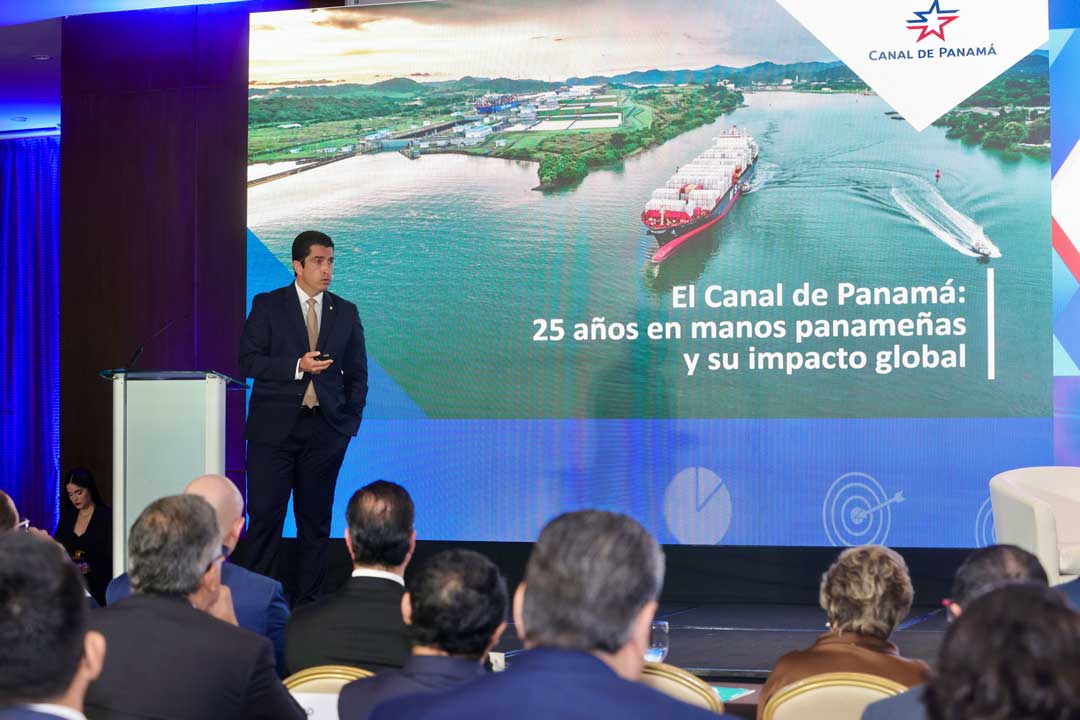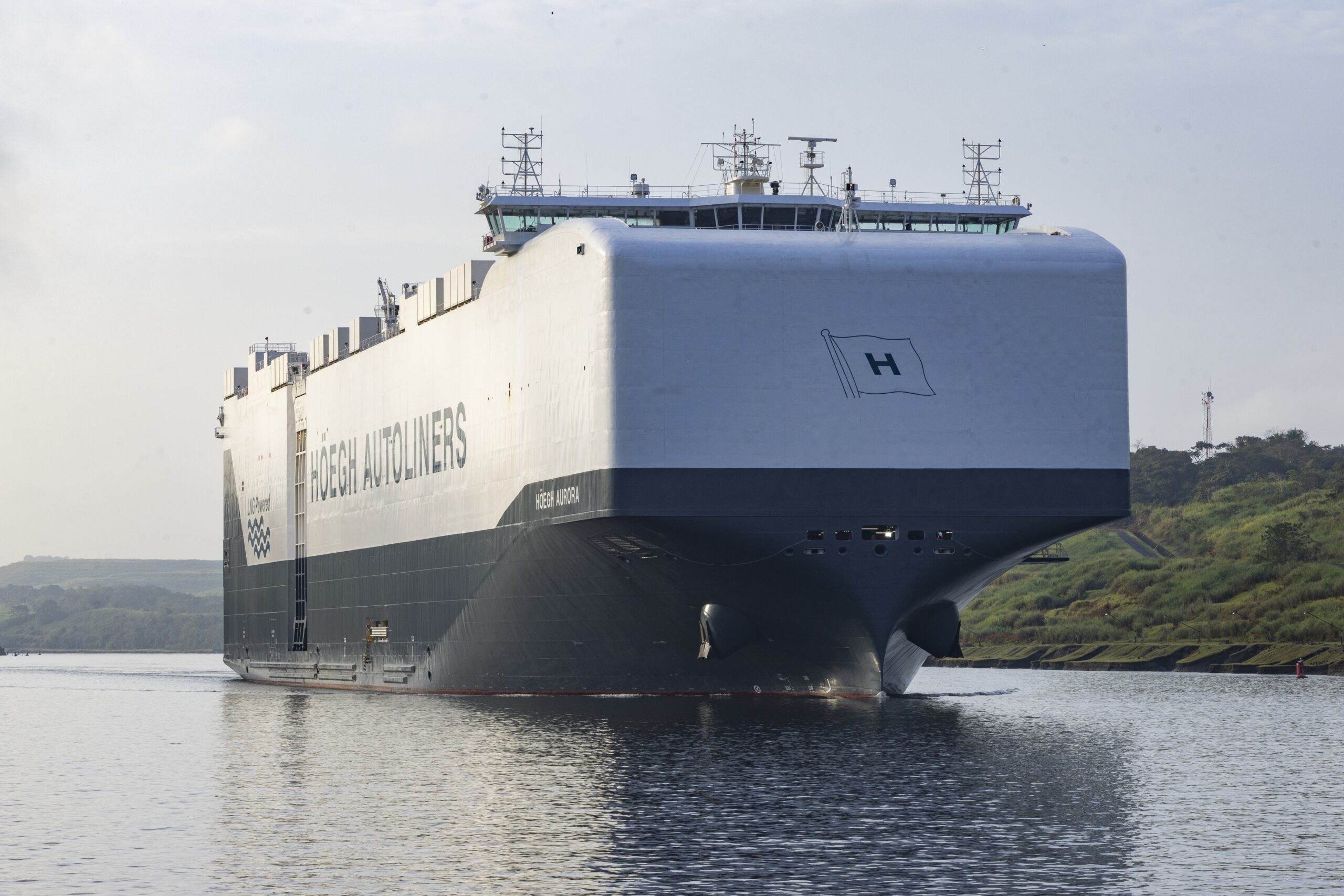Value and Demand for Waterway Marked by Steady Growth
Former U.S. President Jimmy Carter Weighs-in on Canal’s Success
PANAMA CITY, Panama, January 3, 2007 – December 31, 2006 marked the seventh anniversary of the Panama Canal’s transfer from the United States to Panamanian operation. At this time, both the value of the Canal and its role in the global supply chain have unrivalled importance, with demand continuing to grow.
In 1977, former U.S. President Jimmy Carter and Panamanian leader Gen. Omar Torrijos negotiated the Torrijos-Carter Treaty, between the Republic of Panama and the United States, which mandated that the Panamanian people assume full responsibility for the administration of the waterway on December 31, 1999.
“We understand the importance of the Canal, its services and the ‘All-Water Route,’ and are doing our best to serve our customers,” said ACP Administrator/CEO Alberto Alemán Zubieta. “Our vision for the future is clear: to continue the legacy of this waterway and ensure efficient, safe and reliable service for years to come.”
The Increased Value of the Canal
This vital waterway of world commerce now services more than 144 different transportation routes from every corner of the globe, connecting major trading arteries and providing safe, time-saving and secure passage for all vessels. A market-oriented business model, steady growth, reliable service and increased demand have yielded a higher value for the Canal, its services and the “All-Water Route,” the route from Asia to the U.S. East Coast via the Panama Canal. After seven years of Panamanian leadership, the Canal is at a crossroads:
Customer Service
Since the Handover, the ACP has shifted the Canal’s operations from a profit-neutral utility to a market-oriented business model – one that focuses on customer service and reliability. Demand for the waterway has risen as a result of the Canal’s increased customer focus and investments to meet the needs of its users.
* The Panama Canal’s Permanent Modernization Program (PMP) includes investments in technology, capital improvements and operational measures to increase capacity.
* The PMP, a more than $1.5 billion investment, improved the waterway’s infrastructure and services, thereby enhancing service and reliability.
Efficiency
Reliability is imperative for world commerce and shipping:
* Shippers traveling from the U.S. Gulf Coast to Asia can save 10 days of time via the Panama Canal.
* Vessels traveling from the West Coast of South America to the U.S. East Coast shave an estimated eight to 16 days, compared to other alternative routes.
* The Canal’s customer-focused business model has encouraged strong growth in the Asia-U.S. East Coast trade route, which has rapidly increased demand for the waterway’s services. This route currently accounts for more than 50 percent of the containerized cargo volume.
* Containerized cargo has grown by more than 100 percent since 2000.
* Sixty-eight percent of Canal traffic originates from or is destined for the United States.
Safer
* The Panama Canal tied its 2004 safety record with 10 accidents in FY 2006 – the fewest accidents occurring in 81 years.
* Simultaneously, in FY 2006, 56.6 percent of transiting vessels were Panamax ships or “supers” (91′ or more in beam), the largest vessels that are able to transit the Canal and require the most resources, skills and maneuverability.
Cost-effective Service
* The average container cost to transit the Panama Canal is less than two percent of the good’s total transportation cost.
* The Canal’s cost remains a small percentage of a good’s total transportation cost. For example, the cost to transit an average container of apparel (valued at approximately $55,000) is 0.11 percent – slightly more than one-tenth of one percent.
Globalization
As the world becomes more interconnected, the significance of the Panama Canal and its function in the global supply chain becomes increasingly more important. The waterway lies within a critical area where trade routes emerge and connect. The ACP will continue its efforts toward maximizing Panama’s strategic location to become the great logistics and transportation hub of the Americas.
Expansion
Today’s world is inextricably linked and another way the ACP increases value and remains critical is through expansion. In an historic move, Panamanians voted to expand the Canal on October 22, 2006, building a third lane of traffic along the waterway through the construction of a new set of locks, which will allow more traffic and double Canal capacity. This expansion will tighten the global supply chain and help get goods to market faster, thus saving time and money for both producers and consumers.
Full Steam Ahead
On this seven year anniversary, former U.S. President Jimmy Carter recognized the value, improved efficiency and high-quality-engineering of today’s Panama Canal. “One of the greatest pleasures of my life as President was to have the [Torrijos-Carter] treaties approved by the United States government and the Panamanian government and to deliver the Canal where it ought to be – and that is to the people of Panama,” President Carter said during a recent visit to the Canal, his first since 2000.
With visionary leadership at the helm and more than 9,000 dedicated ACP employees, the new Panama Canal proves why it is a “better way to go,” solidifying its unwavering commitment to Panama and world trade.
About the Panama Canal Authority (ACP)
The ACP is the autonomous agency of the Government of Panama in charge of managing, operating and maintaining the Panama Canal. The operation of the ACP is based on its organic law and the regulations approved by its Board of Directors. For more information, please refer to the ACP’s Web site: www.pancanal.com.




